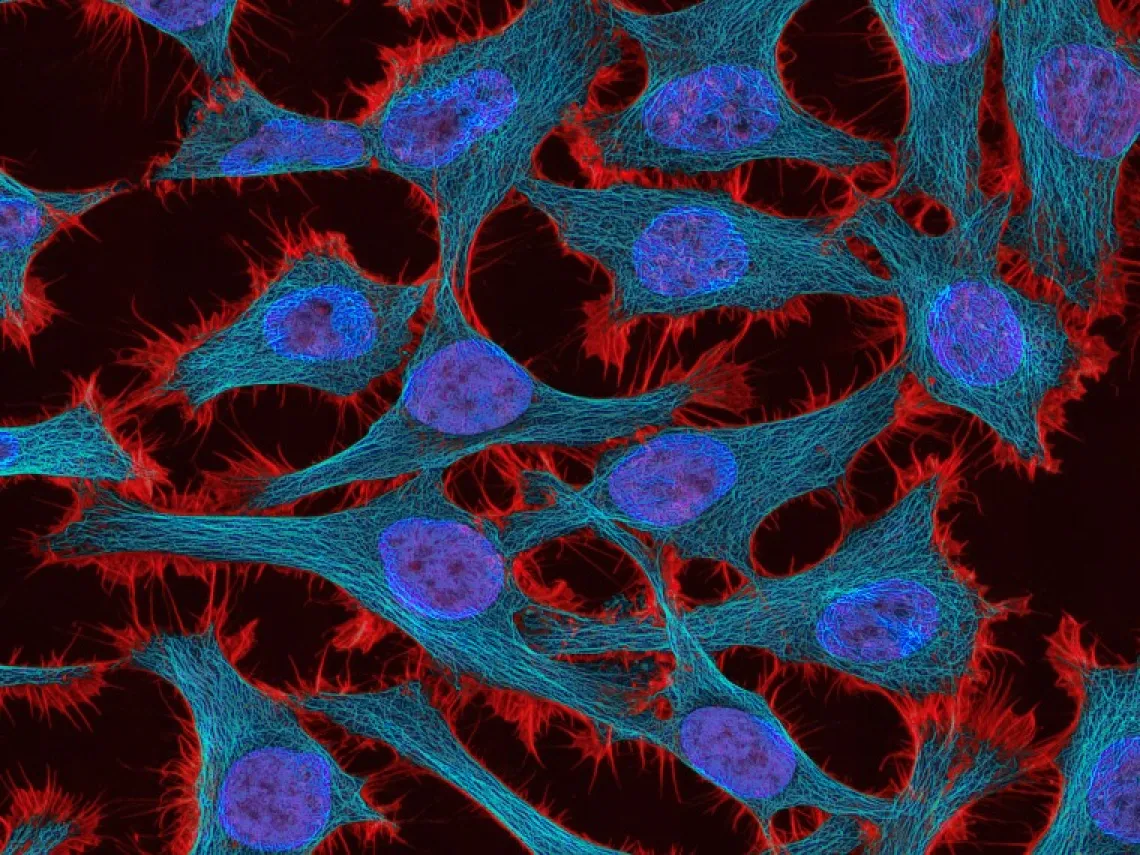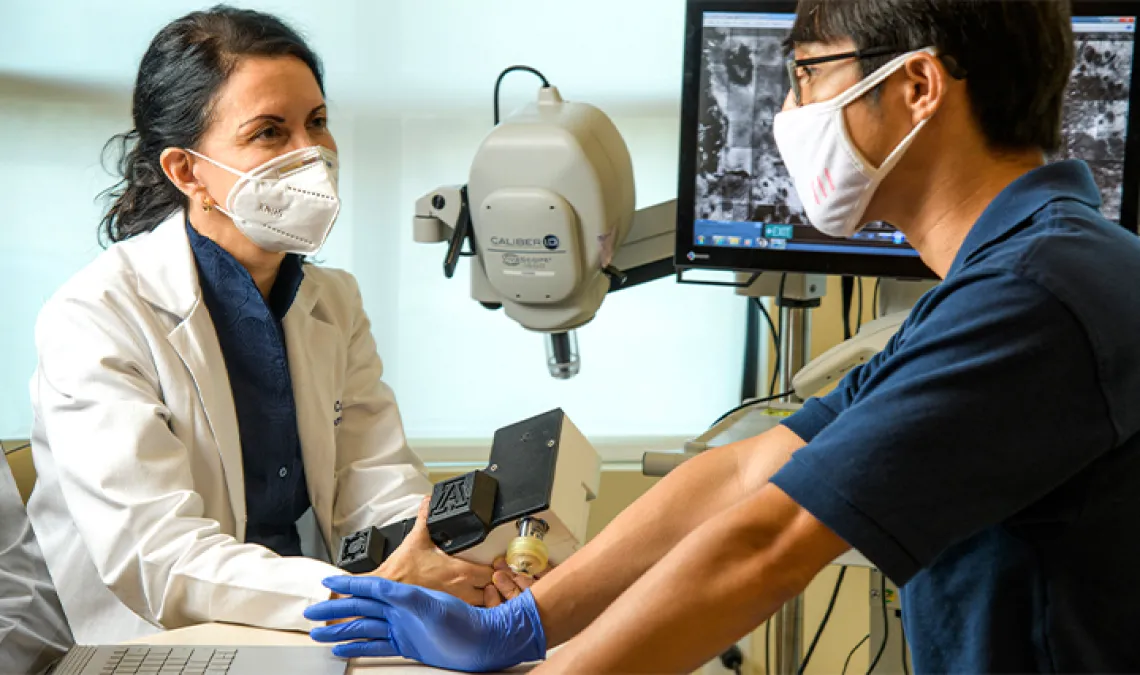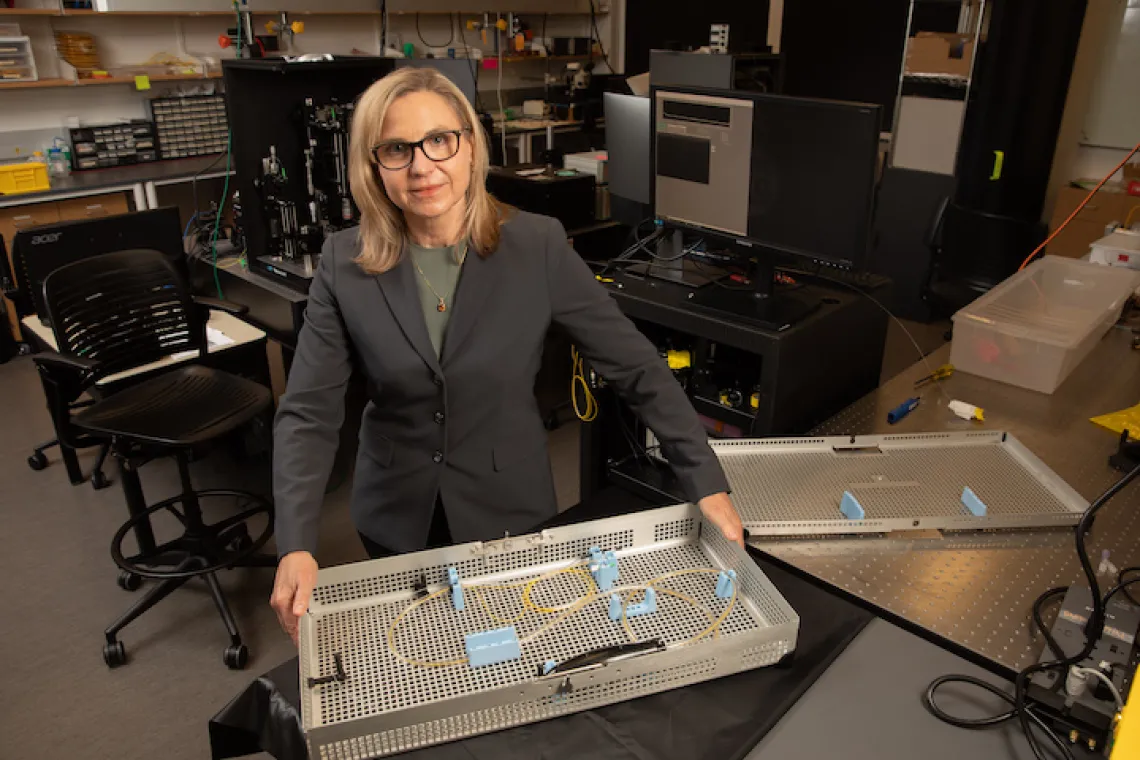Crushing cancer with innovative, interdisciplinary approaches
BIO5 members are working to tackle many different kinds of cancer with innovative approaches.

You likely know someone who has battled cancer, whether it be a loved one, a colleague, or yourself. Cancer is the second leading cause of death in the U.S., so finding better prevention, diagnostic, and treatment strategies is essential to defeating this public health concern to help us lead healthier, longer lives.
As residents of Arizona, we are no strangers to ample sunshine. While being outside is beneficial to our well-being, too much exposure to sun is a major contributing factor to skin cancer, the most common type of cancer in the U.S. At least 5 million people in our country are treated for skin cancer annually, resulting in more than $8 billion in medical expenses.

Clara Curiel, MD and Dongkyun Kang, PhD
Co-director of the Skin Cancer Institute Clara Curiel-Lewandrowski teamed up with Dongkyun Kang, assistant professor of optical sciences and biomedical engineering, to develop a novel device that uses reflectance confocal microscopy (RCM) to facilitate noninvasive imaging of the skin. This will allow doctors to quickly and safely diagnose many skin cancers, as well as monitor treatment responses without a biopsy.
Gastrointestinal (GI) cancers collectively represent one of the greatest public health challenges, accounting for more than one-quarter of all global cancer cases and more than 35% of all cancer-related deaths. Many of these cancers, including pancreatic and biliary, have been historically hard to treat.
Rachna Shroff, associate dean of clinical and translational research and chief of GI medical oncology at the UArizona Cancer Center, uses genomic profiling of tumors to tackle stubborn gastrointestinal cancers. She also supports other researchers and clinicians in translating their findings from bench to bedside through her role as director of the Arizona Clinical Trials Network. Shroff’s passion for studying and treating patients with these cancers stems from the dire global need and her desire to improve quality of life.
“GI cancers are a global problem, and at the end of the day, unfortunately, the outcomes are quite grim for patients with a lot of GI cancers,” she said. “As somebody who knew that she wanted to do clinical trials and drug development, this seemed like a space where there was a huge need for more people working, thinking, and trying to be creative about novel clinical trial designs to help improve the outcomes for these patients.”
Ovarian cancer is the deadliest gynecological cancer in the U.S. Because the ovaries are located deep in the body, this type of cancer generally presents without early symptoms and currently has no effective screening techniques.

Jennifer Barton, PhD
Jennifer Barton, director of the BIO5 Institute and Thomas R. Brown Distinguished Chair in biomedical engineering, has invented a novel falloposcope imaging device with three high-resolution optical imaging techniques that will enable earlier detection of ovarian cancer. In a pilot trial that began in fall 2021, Barton is working with John Heusinkveld, an assistant professor of obstetrics and gynecology at the College of Medicine – Tucson and a board-certified specialist in female pelvic medicine and reconstructive surgery in Banner – University Medical Center Tucson's Department of Obstetrics and Gynecology. to test the device in humans.
Breast cancer is the most common cancer in women and the second leading cause of cancer-related death in the U.S. The American Cancer Society estimated that more than 280,000 new cases of invasive breast cancer would be diagnosed in 2021. Donato Romagnolo, professor in the School of Nutritional Sciences and Wellness; Ornella Selmin, research associate professor of nutritional sciences; Cynthia Thomson, Director of the Canyon Ranch Center for Prevention and Health Promotion; and Janet Funk, professor in the College of Medicine - Tucson; are studying how different foods and supplements may prevent breast cancer or lessen its aggressiveness.

Cynthia Thomson, PhD, RD
Oral, head and neck cancers account for more than 330,000 deaths worldwide annually and 4% of all cancers in the U.S. Human papillomavirus (HPV), though typically known for causing genital warts and cervical cancer, is also emerging as leading cause of head and neck cancers, especially in the U.S. Scientists still don’t know exactly how the virus is able to infect and persist in our cells for years without being detected by the immune system.
Samuel Campos, associate professor of immunobiology, molecular and cellular biology, and cancer biology, aims to understand the complex interactions between HPV and our cells – particularly how the virus enters and evades detection.
“Viruses like HPV are the original, and best, cell biologists,” Campos said. “Studying their basic biology will yield great and unexpected insights into humans and how our cells work at fundamental levels.”
Campos collaborates with Koenraad Van Doorslaer, assistant professor of virology and genetics, who studies why evolutionarily related viruses differ in their carcinogenic abilities. Their work will ultimately pave the way for better prevention, detection and treatment strategies for HPV infection and HPV-related oral, head, and neck cancers.
Tackling a grand scientific and medical challenge like cancer requires collaboration between physicians, scientists, engineers, computational researchers, translational innovation partners like Tech Launch Arizona and more. This approach is supported by the interdisciplinary environment of the BIO5 Institute, which exists because of continued funding from the Technology and Research Initiative Fund (TRIF) that helped launch BIO5 in 2001. Moreover, additional federal grant funding to continue this work is bolstered by early-stage, foundational and seed grants from BIO5.
